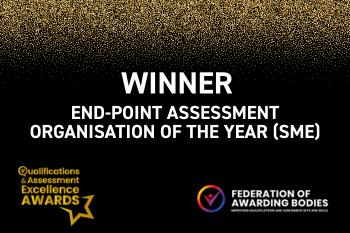Women are often underrepresented in many protective service roles, not least in fire and rescue. This International Women’s Day, the theme of #AccelarateAction is particularly fitting to describe how many fire services have transformed in recent years to become much more inclusive. The number of women in fire services across the country has increased from 6.4% five years ago to 9.3% today, and that number continues to rise.
Encouraging more women to join the fire service becomes more achievable when women see themselves reflected in the workforce. As increasing numbers of women join the fire service, there is a greater opportunity to show it as a potential career option. Women have been firefighting for longer than people realise; take a look through these key milestones for women in the fire service below.
Key milestones
1815 – In the United States, the first known female firefighter was Molly Williams, an African American woman and a slave of a New York City merchant. Stories differ as to how Williams came to be a member of the fire service, but a blizzard in 1818 and a cholera outbreak meant that male firefighters were scarce. Williams took her place with the men in the fire service during this time.
1879 – In the United Kingdom, the first record of women working in the fire service was at Girton Ladies’ College (at the University of Cambridge), who had an all-female fire brigade. Students at the college were taught how to fight fires by the first Chief Fire Officer for the Metropolitan Fire Brigade, Captain Sir Eyre Massey Shaw. The brigade was in existence until 1932.
1914-1918 World War I – Women’s brigades in the South of England carried out firefighting and rescue. Women were trained on how to protect factories from fires.
1938-1945 World War II – At the outbreak of the Second World War, women played a far greater role in the fire service. During this war, women were not expected to put out fires, but they did support the service in all other ways, being dispatch drivers and riders and working on the communications network, for example.
1975 – Women were accepted into the voluntary firefighting unit at Grampian Regional Fire Brigade.
1982 – Josephine Reynolds was accepted onto a new training scheme with the Norfolk Fire and Rescue Service aimed at school leavers. After a year of training, she became the first female wholetime firefighter in Britain.
1993 – Women in the Fire Service UK (WFS) was set up as a self-help and not-for-profit organisation to support women working in the fire service. Then called Networking Women in the Fire Service (NWFS), the organisation sought to influence the equality agenda.
2002 – The fire service underwent an Independent Review led by Professor Sir George Bain, commissioned by the government. This review aimed to assess the operational and managerial aspects, as well as the working environment for firefighters. In this review, the Equal Opportunities Commission highlighted several practices that hindered the recruitment of women and racial minorities within the service. The report served as a guide for services to enhance their recruitment strategies and foster a more inclusive workplace culture, with the number of women employed by the fire service increasing from just 1.7% in 2002 to 8.7% in 2023.
2004 – Danielle (Dany) Cotton, a firefighter at London Fire Brigade, became the first woman firefighter in the UK to be awarded the Queen’s Fire Service Medal.
2011 – Ann Millington became the first female chief fire officer, while working at Kent Fire and Rescue Service.
2017 – Dany Cotton became the first woman to hold the position of Commissioner of the London Fire Brigade.
2022 – The Local Government Association report that 14.6% of chief fire officers were women, across the 48 fire and rescue authorities in the UK. Alongside this, the LGA also reported women making up 7.32% of deputy chief fire officers and 18.5% of assistant chief fire officers.
2024 – As of 31 March 2024, 9.3% of firefighters were women, compared to 8.7% the previous year and 6.4% five years ago.
Today, women in fire services across the country are still working hard to continue the legacy of their predecessors and encourage more women to take up a career in firefighting. In 2024, it was reported that, on average, the basic salary of men in firefighting roles was 6% higher than that of women suggesting that despite the increases in the number of women taking on roles in the fire service, there is still a long way to go to reach true equality.
However, in recent years, apprenticeships have become one of the key factors involved in steering the fire service towards a more inclusive workforce.
As the End-Point Assessment Organisation (EPAO) for 33 out of 44 of England’s fire services, we are proud to be able to support the next generation of female firefighters through their apprenticeship and into their career, such as Lauren Bradshaw from Cheshire FRS and Ellice Schnable from London Fire Brigade.
Find out more about our End-Point Assessment Services.





